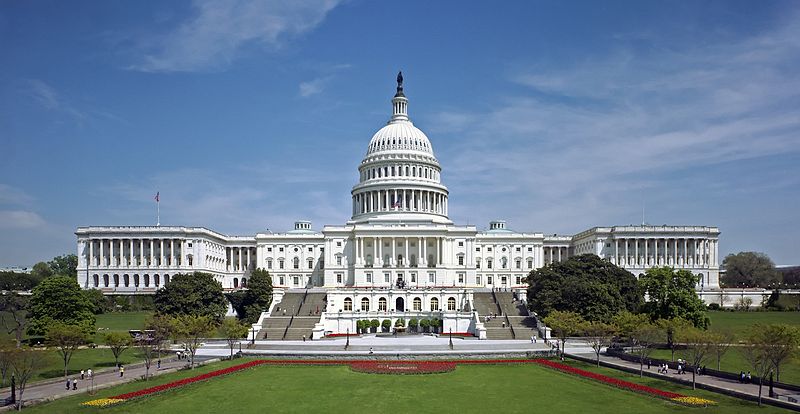
The Nuke Review: May 8 – May 14
May 8
Vice President Joseph Biden said in a speech that Iran’s window for a peaceful resolution to the nuclear standoff is closing “in the near term” and that “we take no option off the table as part of our determination to prevent Iran from acquiring a nuclear weapon.” He then talked about the new round of oil sanctions that is slated to go into effect on July 1, “We’re not doing anything but tightening the screws, unless Iran changes course, the pressure will keep increasing.”
The Middle East WMD Free Zone talks seem to be in doubt as Finnish diplomat Jaakko Laajava stated, “Unfortunately, while much has de facto been already achieved in these consultations in terms of identifying common ground, I cannot yet report that the conference will be attended by all states of the region.” Egypt originally proposed talks for sometime in 2012, but it is looking increasingly unlikely that such a meeting will take place this year.
Experts acknowledge that even if North Korea does test a third nuclear device, the country has a long way to go before it has the ability to deploy a nuclear weapon. “There can be a huge difference between a nuclear explosive ‘device’ and a weapon,” said Ivan Oelrich, a nuclear weapons consultant and former head of strategic weapons at the Federation of American Scientists. “We have no idea how large North Korea’s bombs are, or even whether they have anything that would be described as a ‘bomb.’” The recent failure of North Korea’s rocket coupled with the limited yields and possible “fissile” of their past nuclear tests makes it extremely unlikely that the country will deploy a nuclear weapon soon.
May 10
The Missile Defense Agency successfully intercepted a test missile off the coast of Hawaii late last night. The SM-3 Block 1B missile launched from the USS Lake Erie intercepted a test missile shortly after 8 PM Wednesday. This was the first in a series of tests for the SM-3 1B and it is on track to go into full production and deployed for the Phased Adaptive Approach missile defense system in Europe by 2015. While the SM-3 1B is more advanced than its predecessor, using a two-color infrared seeker to expand the missile’s range and maneuverability, it is not able to intercept an ICBM and can only be used against a missile in mid-course.
The House Armed Services Committee approved their version of the FY13 National Defense Authorization Act that authorizes $554 billion for the Pentagon. The HASC appropriated a total of $18.1 billion for the NNSA including, $2.3 billion for directed stockpile work and $2.4 billion for defense nuclear nonproliferation. The Committee also approved language that would require the Air Force’s new long-range bomber to be nuclear weapons capable. The Committee also approved an amendment in the FY13 NDAA that supports “steps to deploy additional conventional forces of the United States and redeploy tactical nuclear weapons to the Western Pacific region” in response to the North Korean nuclear weapons and missile programs. The amendment mandates Secretaries Clinton and Panetta report on the feasibility and logistics of redeploying tactical nuclear weapons to South Korea.
Pakistan test fired a second nuclear-capable missile called the Hatf III Ghaznavi a week after test firing an IRBM called the Shaheen-1A. The SRBM Hatf III Ghaznavi has a range of 180 miles (290 km) and was launched at the conclusion of annual field training exercises
An unidentified North Korean committee spokesman says the country will further strengthen its “nuclear deterrent” to protect its sovereignty “regardless of whatever the price it would pay,” and will continue to work towards bolstering its nuclear arsenal.
May 13
China, South Korea, and Japan warned North Korea that they will not tolerate any additional nuclear tests. “Our three countries agreed that we will not accept further nuclear tests or further provocations from North Korea,” said South Korean President Lee Myung-Bak.
Iran has been routinely shutting off satellite tracking systems on its sea-bound oil tankers for more than a month in an effort to avoid the sanctions now hitting the country. Sanctions have severely hurt the value of the Iranian Rial making it increasingly difficult to “pay for materials for the nuclear program, and, more broadly, it puts pressure on the leadership,” said David Cohen, Treasury Department’s undersecretary for terrorism and financial intelligence.
May 14
Iranian and IAEA negotiators are beginning a two-day meeting this week to discuss Iranian intransigence in allowing inspectors to visit all nuclear sites and have access to vital information on their nuclear program. “In particular, clarification of the possible military dimensions remains our priority…It is important now that we can engage on the substance of these issues and that Iran let us have access to people, documents, information and sites” said Herman Nackaerts, deputy director general of the International Atomic Energy Agency. At the top of IAEA’s agenda may be access to the nuclear site at Parchin, which has been rumored to house nuclear weapons related work. Furthermore, an IAEA report last November found that Iran had constructed a containment vessel in 2000 that may be “strong indicators of possible (nuclear) weapon development.”
An unnamed source provided the Associated Press with a drawing of an alleged explosive test chamber at the Iranian military base at Parchin. It shows a large chamber in a warehouse-type building with a main pipe leading from the front. The image was provided to the AP by a member of an IAEA country that is critical of Iran’s assertions about the peaceful nature of their nuclear program. However, while a former IAEA official Olli Heinonen, believes to be the pressure chamber the IAEA suspects is at Parchin, it is not clear if it is genuine or comes from the Parchin site.






… [Trackback]…
[…] Read More: americansecurityproject.org/blog/2012/the-nuke-review-may-8-may-14/ […]…